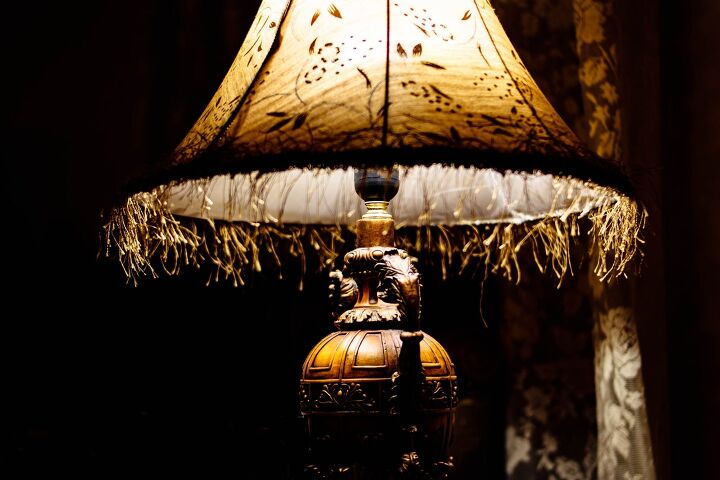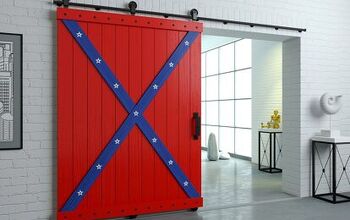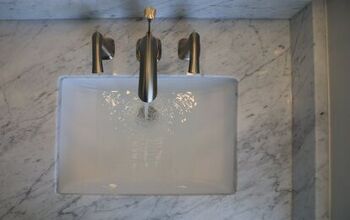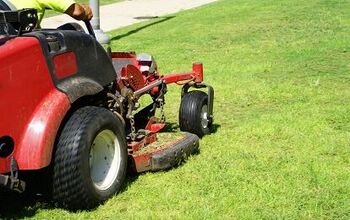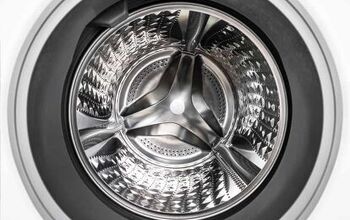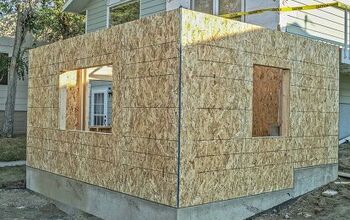How Do You Determine What Size Harp To Get For A Lamp?

Are you creating a DIY lamp, repurposing an amazing flea market find, or needing to make adjustments to an existing lamp? If you’re fixing, making, or buying a lamp, the right size harp makes all the difference. The harp hides the things you don’t want to see, but how do you know what size to get for a lamp?
Lamp harps come in various sizes, and the size of the harp you need for your lamp depends on the lamp shade. The harp attaches the shade to the lamp and should be tall enough to keep the shade from hiding the lamp. Likewise, the harp must be short enough so the shade hides the lamp’s hardware.
If you’re replacing an existing lamp shade with one that’s shorter or taller, you’ll likely need a new harp. Or perhaps you find an amazing vintage lamp base at a local thrift shop, and it’s missing the harp. No matter the reason, if you need to buy a lamp harp, it’s critical to get the right size.
What Size Harp Do I Need For My Lamp?
Harps come in several sizes, averaging between 4 and 15 inches and in ½-inch increments. To determine which size will work best for your lamp, you need to know the dimensions of the lamp shade. Therefore, if you don’t yet have a lamp shade picked out, shop for that first.
Once you have a shade, you can measure it to decide on the best harp size for your lamp. If the lamp you have already has a shade, how does it look? Does the shade sit high enough so you see the lamp base but low enough to hide the socket and hardware?
If so, then the current lamp harp is an appropriate size. Measure the current shade and see if you can find one you like in a similar size and shape. But if you can see the lamp hardware, the harp is too tall. In contrast, if you can’t see the entire lamp base, the harp’s too short.
When this happens, you can either purchase a new harp or find a new shade to fit the harp you have. But you likely don’t want to buy a bunch of different-sized harps to try out on your lamp. So, how can you narrow down your choices?
Measuring For A Replacement Lamp Harp
You love your current shade, but it does not fit right, and you need a new harp. You have a few options to measure for a replacement lamp harp. This example assumes you currently have a harp and lamp shade.
You’ll need to know the size of your existing harp. You can check under the finial base for a number that indicates the harp size. Or you can measure the harp from the top (just below the finial) to the bottom of the saddle.
Then, look at how the shade currently fits on your lamp to determine what’s wrong with it.
Is The Harp Too Tall?
If you see the lamp hardware, your harp is too tall. Therefore, it’s holding the shade up higher than necessary, exposing the socket and other components.
Measure how much room is between the bottom of the shade and the top of the lamp base. For example, if you see approximately one inch of hardware, select a harp that is one inch shorter than your current one.
Is The Harp Too Short?
However, if the lamp’s shade hides the hardware and covers the top of the lamp base, the harp’s too short. Measure how far the shade extends beyond the top of the base. For example, if it hides two inches from your lamp, you need a harp two inches taller.
You might need to try a couple of options to find the absolute perfect fit. But this is the easiest way to find the right size harp when you just need to make some minor adjustments.
Determining The Size Of A New Lamp Harp
Replacing a harp that’s not quite the right size is one thing. But what if you don’t have a harp to use as a benchmark? In this case, you need to measure your lamp shade.
You could do it the quick way. Hold the lamp shade in place over the lamp base and measure from the top of the shade to where the bottom of the harp would be. This gives you a rough idea of how tall a harp you need. But if you want to get a bit more accurate, measure the lamp shade.
When measuring a lamp shade to determine the harp size, the main dimension to consider is the height. Measure the lamp shade from top to bottom using a tape measure or ruler. Typically, the lamp harp should be no more than ½ inch shorter or ½ inch taller than the lamp shade.
For example, if your lamp shade is 10 inches tall, look for a harp between 9 ½ and 10 ½ inches. In most scenarios, a harp within this range should work, and you might need to try out a couple to get the perfect fit.
Of course, there are always exceptions. For example, what if your lamp base features an unusually tall socket or oversized hardware that you need to hide? Then your lamp harp might need to be even shorter than your lamp shade to account for the extra height in the hardware.
Also, since harps typically come in ½-inch increments, round down as necessary. So, if you determine the harp size you need is 8 ¾ inches, select an 8 ½-inch harp.
Keeping these general guidelines in mind should quickly lead you to the perfect harp size.
Should I Get A Regular Harp Or Heavy Duty Harp?
Most regular lamps feature regular harp bases and regular-duty harps. Therefore, you should be fine getting a regular harp for fabric shades and other standard styles. However, if you have an unusually heavy style of lamp shade, like a metal drum, you might need a heavy-duty harp.
Check your current lamp base to see what kind of saddle it has (where the harp sits). If your lamp has a heavy-duty base, you can still use a regular harp, but it might fit loosely in the saddle.
You can crimp the ears of the harp with pliers to make it fit more snugly. Or, you can opt for a heavy-duty harp to match the heavy-duty base. If the current base is a regular base, a heavy-duty harp won’t fit well.
Do I Need To Replace My Lamp Harp?
If your current lamp shade sits too low, you might not need a whole new harp. If you don’t need to raise the shade excessively, you can get a lamp riser. The riser screws into the top of the harp (where the finial goes).
It raises the shade up, and the top of the riser features threads to place the finial. You can find lamp risers that add between ½ inch to 2 inches of height or more to your lamp harp.
Risers come in a variety of finishes to match your current lamp hardware. Although lamp harps aren’t super expensive, adding a riser is easier and could save you a few bucks.
Are You Sure You Need A Harp For Your Lamp?
Many lamps use harps to connect the lamp shade. However, not all of them do. If you’re getting a new shade and lamp, check the style before assuming you need a harp. Lamps come with different types of lamp shade fitters.
For example, a UNO lamp shade fitter rests on the socket. The bulb holds the shade in position when you screw it into place. These fitters are not interchangeable. Make sure you actually need a harp for your lamp before buying one.
Finding The Right Size Harp For Your Lamp
The right harp size starts with your lamp shade. The harp is what places the shade at the ideal height. It’s what ensures you can see your lamp but not the bulb and hardware.
If you can see the socket, the harp is too tall. And if the shade hides the top of the lamp base, the harp’s too short.
Typically, find a harp that’s roughly the same height as your shade within ½ inch taller or shorter. It might take a bit of trial and error to find the perfect size, but knowing these rough guidelines helps narrow your options.
If you simply need to replace an existing harp, you can check for a number under the finial base that tells the harp’s size. Or measure the harp from the bottom of the saddle to the harp’s top. If you only need to raise your shade a couple of inches or less, try a lamp riser instead.
Using these easy tips, you can find the perfect harp size for your lamp.
Related Guides:

Stacy Randall is a wife, mother, and freelance writer from NOLA that has always had a love for DIY projects, home organization, and making spaces beautiful. Together with her husband, she has been spending the last several years lovingly renovating her grandparent's former home, making it their own and learning a lot about life along the way.
More by Stacy Randall



